Honor Award
Stormwater from KC to the Sea; An Experiential Curriculum for Students in the 4th–6th Grades
Kansas City, MO
BNIM, Kansas City, MO
Client: City of Kansas City, MO
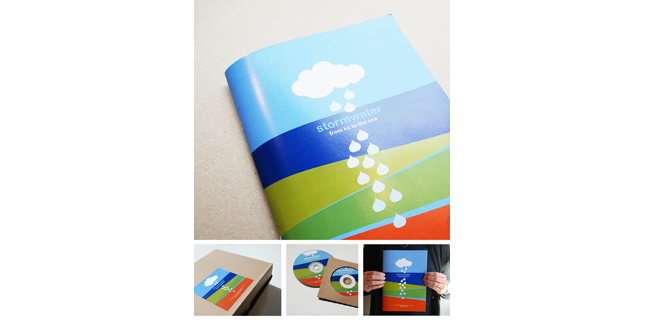
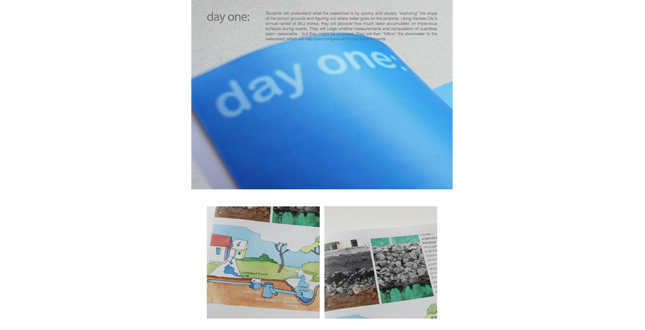 Close Me!
Close Me!Top: Day One. Bottom Left: Urban Watershed. Bottom Right: Impervious and Pervious Pavements.
Download Hi-Res ImageImage: BNIM
Image 2 of 15
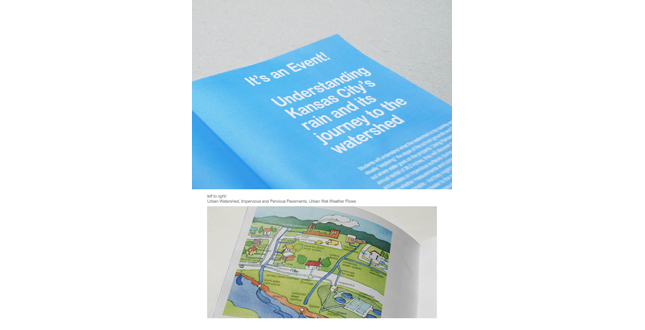
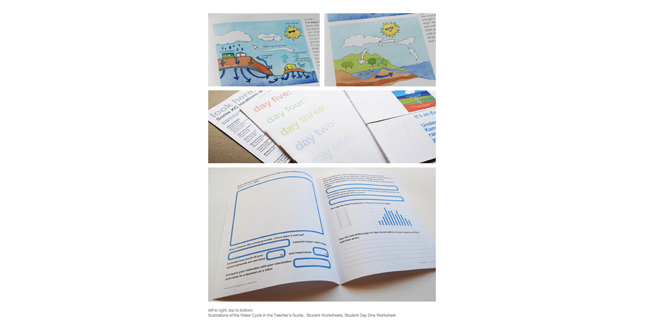 Close Me!
Close Me!Left to right, top to bottom: Illustrations of the Water Cycle in the Teacher's Guide, Student Worksheets, Student Day One Worksheet
Download Hi-Res ImageImage: BNIM
Image 4 of 15
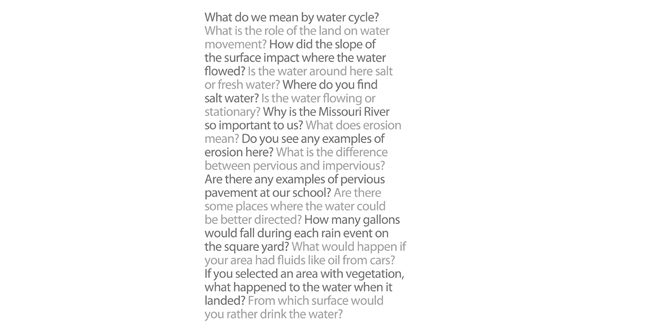
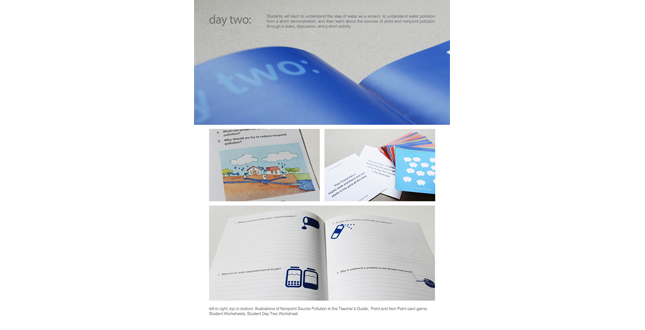 Close Me!
Close Me!Left to right, top to bottom: Day Two, Illustrations of Nonpoint Source Pollution in the Teacher's Guide, Point and Non Point card game, Student worksheets, Student Day Two Worksheet.
Download Hi-Res ImageImage: BNIM
Image 6 of 15
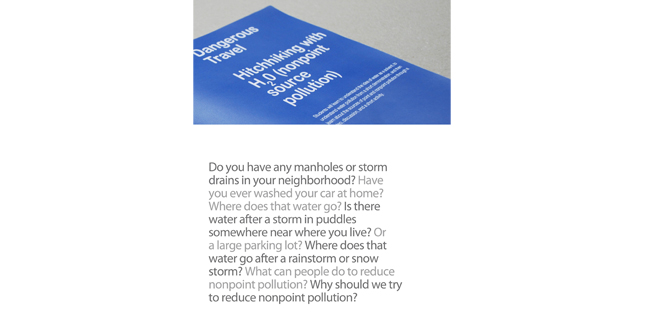
 Close Me!
Close Me!Day Three. Students will study BMPs and play a game (BMP Bingo!) to recognize what improvements or best management practices already exist in their neighborhoods.
Download Hi-Res ImageImage: BNIM
Image 8 of 15
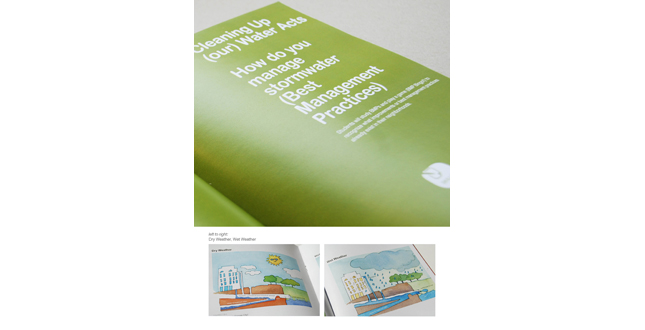
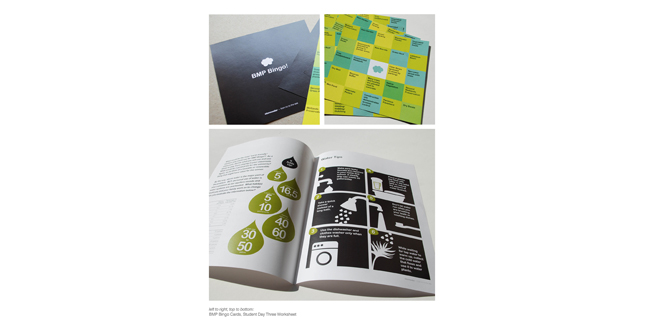 Close Me!
Close Me!Left to right, top to bottom: BMP Bingo Cards, Student Day Three Worksheet.
Download Hi-Res ImageImage: BNIM
Image 10 of 15
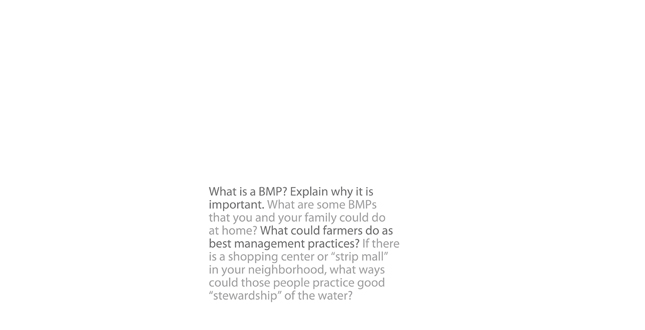
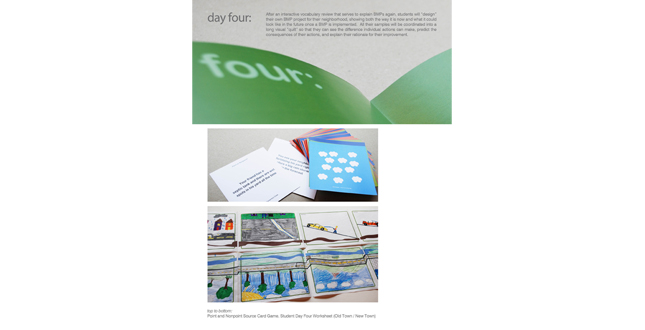 Close Me!
Close Me!Top to bottom: Day Four, Point and Nonpoint source Card Game, Student Day Four Worksheet (Old Town / New Town).
Download Hi-Res ImageImage: BNIM
Image 12 of 15
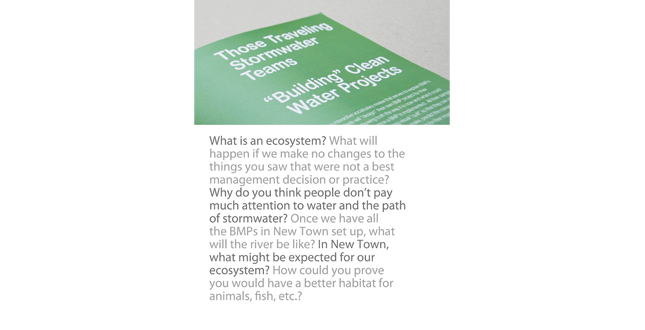
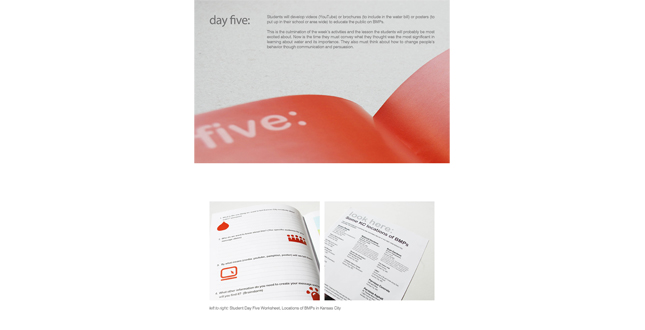 Close Me!
Close Me!Top: Day Five. Bottom Left: Student Day five Worksheet, Bottom Right: Locations of BMPs in Kansas City.
Download Hi-Res ImageImage: BNIM
Image 14 of 15
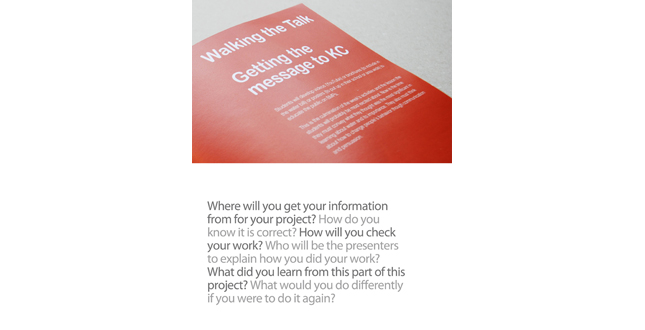
Project Statement
Good water quality is everybody's business. This curriculum structures five interactive and fun days around learning about stormwater and its importance to a city. Students discover how precipitation moves through the watershed. They demonstrate how water becomes polluted and determine how Best Management Practices (BMPs) improve the quality and quantity of water. They also locate current BMPs in their community, design the ideal street, and create a public service announcement that persuades people to follow BMPs.
Project Narrative
—2011 Professional Awards Jury
Audience: Fourth and sixth graders
Campus Context
The City of Kansas City, Missouri is planning to improve their Swope Campus (which comprises the Parks and Recreation Headquarters and the Water Services Department) as an education lab for Best Management Practices. In addition to the transformation of the campus into series of outdoor learning labs, the Departments had the vision to integrate the campus with an elementary school curriculum that meets state educational requirements and showcases how each member of society has a role in protecting the health of our watershed and enhancing the quality of life for those living downstream.
Educational Objectives
The stormwater division of the Water Services Department performs an important service, improving water quality and addressing stormwater quantity issues facing Kansas City. However, most people in our community neglect to ever think about stormwater management or recognize the significant role it plays in their lives. After all, stormwater usually disappears down a drain or into a nearby stream soon after it falls from the sky. The approach to the Swope Campus improvements aims to change that notion and provide a platform for area students to experience the issues faced on a daily basis by all of us within the watershed. This is a reflection of the country's increasing awareness that the health of the watersheds has direct effects on the health of all species living within it.
After investigating other national examples and stormwater curriculum (including the Northern Kentucky Sanitation District No. 1 Public Service Center), it was realized that several of the goals outlined above could be reached more effectively by: 1) developing a school-based stormwater curriculum and 2) providing learning spaces for public and student participation on the Campus around the topic of stormwater. The Campus can serve as a place for Kansas Citizens to connect with nature and gain the knowledge needed to protect our streams, lakes, and rivers through these hands-on learning spaces. Students will be able to apply the lessons they learn in the classroom and on the Campus to their everyday lives.
School-Based Curriculum
The designer developed the attached curriculum to align closely with the state education standards. In Missouri schools, the prescribed state standards outline the requirement for students to understand water as a resource that cycles through the environment, provides a basic element for all life, changes the geographical landscape, and is affected by human activity. The Missouri Department of Education's fourth and sixth grade level expectations reference these concepts as major components of their science curriculum. While all students are required to understand the many aspects of this basic element called water, many of them have little contact with the natural environment.
Inviting young people to be active participants as they experience all that happens to water in our community as it makes the journey from the sky to our local watersheds (and beyond) could significantly improve both the educational experience of area youth and the environment. The curriculum is interactive, asking students to work in cooperative groups on activities that include questions and situations about their community's water quality. In addition to the student resources generated, a comprehensive teacher instruction book was created by the designer to enable educators to guide the students through the classroom exercises. The curriculum invites students to hypothesize about what will happen to their watershed, interact in a real setting, observe natural systems, and collect data about their observations. The curriculum will prepare students to respect water throughout their lives and recognize the importance of protecting this vital resource.
Aligned with state educational standards, the following is a broad overview of program outcomes. Students will understand:
- The impact of water pollution, both point and non-point sources, on water quality
- Their own role in adding pollution to the local watershed
- How BMPs positively reduce pollution
- The relationship the watershed has to the people living within it
- The role that topography (natural and manmade) plays in stormwater control
- How ecosystems impact and are impacted by water quality
The curriculum was piloted in six area schools in the spring of 2010. All of the teacher were brought together to discuss the success and recommend improvements to the curriculum. Additional schools will be added in the fall of 2011 school year. Field trips to the site could begin as early as spring of 2012. Below is a brief description of each of the five interactive and fun days.
Day one: "It's an Event! Understanding Kansas City's rain and its journey to the Watershed"
Students will understand what the watershed is by quickly and visually "exploring" the slope of the school grounds and figuring out where water goes on the property. Using Kansas City's annual rainfall of 38.2 inches, they will discover how much water accumulates on impervious surfaces during events. They will judge whether measurements and computation of quantities seem reasonable – but they might be surprised. They will then "follow" the stormwater to the watershed, which will help them compare amounts/measurements.
Day two: "Dangerous Travel—Hitchhiking with H2O (nonpoint source pollution)"
Students will learn to understand water pollution from a short demonstration and then learn about the sources of point and nonpoint pollution through a video, discussion, and short activity.
Day three: "Cleaning up (our) Water Act—How do you manage stormwater (Best Management Practices)"
Students will study BMPs and play a game (BMP Bingo!) to recognize what improvements or best management practices already exist in their neighborhoods.
Day four: "Those Traveling Stormwater Teams—"Building" Clean Water Projects"
After an interactive vocabulary review that serves to explain BMPs again, students will "design" their own BMP project from their neighborhood, showing both the way it is now and what it could look like in the future once a BMP is implemented. All their samples will be coordinated into a long visual "quilt" so that they can see differences individual actions can make, predict the consequences of their actions, and explain their rationale for their improvement.
Day five: "Walking the Talk—Getting the message to KC"
Students will develop videos (YouTube) or brochures (to include in the water bill) or posters (to be put up in their schools or area wide) to educate the public on BMPs. This is the time for them to convey what they thought was the most significant in learning about water and its importance. They must also think about how to change people's behavior through communication and persuasion.
Summary
With future completed projects, the Swope Campus will be added to the curriculum as a field trip opportunity for student to see in action actively working BMPs. In addition to educating students, the campus could be turned into a watershed education center and a demonstration site for developers and citizens, a place where visitors can actively participate in understanding how green approaches can improve our area's watersheds and communities. The curriculum and campus can become models in the Midwest demonstrating the value of BMPs, the effectiveness of on-site stormwater management and the importance of educating its citizens as to how they can integrate green approaches into their daily lives.
The curriculum supports the Water Services Department's Wet Weather Solutions program, which was designed to address flooding and water quality problems. The educational component, facilitated in area schools, can provide our city's youth the knowledge and opportunity to make suggestions to city leaders to improve water quality now and for future generations. It also supports a Missouri Department of Conservation Summit held in 2009 to establish a vision for Missouri's outdoor future. Attended by many of the state's thought leaders, the top two priorities which emerged from this process were to teach Missourians about the outdoors and ensure clean, abundant surface and groundwater. This campus will bring Kansas City one step closer to being the greenest city in the nation while helping to educate our citizenry.
Distribution method: Currently the documents are being printed as schools select the project. All districts will eventually be contacted to use the curriculum and the campus.
Circulation/distribution: Currently the curriculum has been piloted in six schools, but it is designed to expand to all Kansas City schools and beyond.
Project Resources
WSD
Terry Leeds; Mark Govea; Bon Marie Gardner
BNIM
Lead Designer: Jim Schuessler, ASLA;
Steve McDowell; Celine Armstrong, ASLA; Aaron Ross;
Beena Ramaswami
Project Explore
Linda Segebrecht; Chris Becicka






